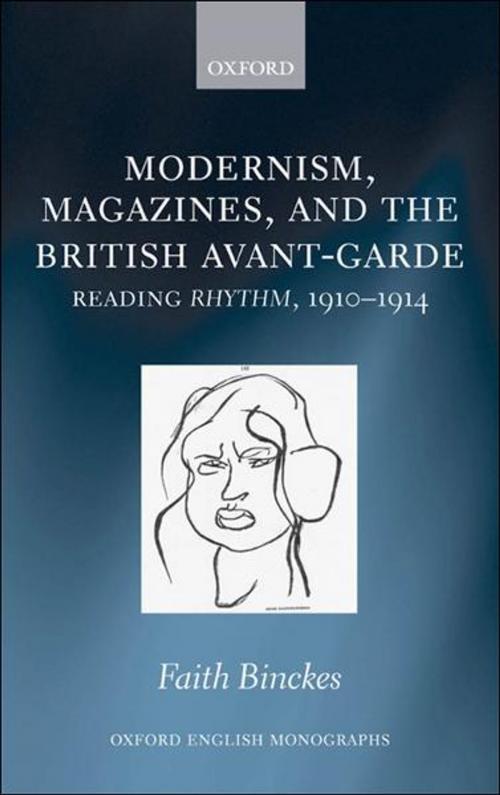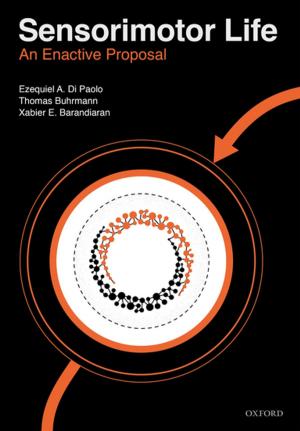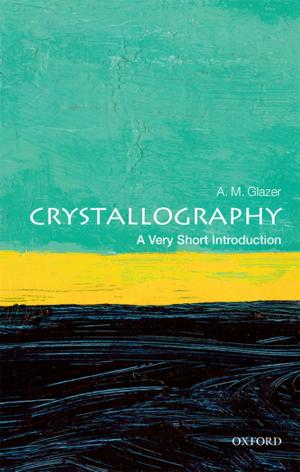Modernism, Magazines, and the British avant-garde
Reading Rhythm, 1910-1914
Fiction & Literature, Literary Theory & Criticism, British| Author: | Faith Binckes | ISBN: | 9780191613715 |
| Publisher: | OUP Oxford | Publication: | May 20, 2010 |
| Imprint: | OUP Oxford | Language: | English |
| Author: | Faith Binckes |
| ISBN: | 9780191613715 |
| Publisher: | OUP Oxford |
| Publication: | May 20, 2010 |
| Imprint: | OUP Oxford |
| Language: | English |
This book is a re-examination of the fertile years of early modernism immediately preceding the First World War. During this period, how, where, and under whose terms the avant-garde in Britain would be constructed and consumed were very much to play for. It is the first study to look in detail at two little magazines marginalised from many accounts of this competitive process: Rhythm and the Blue Review. By thoroughly examining not only the content but the interrelated networks that defined and surrounded these publications, Faith Binckes aims to provide a fresh and challenging perspective to the on-going reappraisal of modernism. Founded in 1911, and edited by John Middleton Murry with assistance from Michael Sadleir and subsequently from Katherine Mansfield, Rhythm and The Blue Review featured a series of pivotal moments. Rhythm was the arena for a challenge to Roger Fry's vision of Post-Impressionism, for the introduction of Picasso to a British audience, for early short stories and reviews by Lawrence, and for Mansfield's discovery of a voice in which to frame her breakthrough writing on New Zealand. A further context for many of these experiments was the extended and acrimonious debate Rhythm conducted with A.R. Orage's New Age, in which issues of the proper gender, generation, and formulation of modernity were debated month by month. However, reading magazines as vehicles for avant-garde development can only provide half the story. The book also pays close attention to their dialogic, reproductive, and periodical nature, and explores the strategies at work within the terminology of the new. Crucially, it argues that they offer compelling material evidence for the consistently mobile and multiple boundaries of the modern, and puts forward a compelling case for focusing upon the specificity of magazines as a medium for literary and artistic innovation.
This book is a re-examination of the fertile years of early modernism immediately preceding the First World War. During this period, how, where, and under whose terms the avant-garde in Britain would be constructed and consumed were very much to play for. It is the first study to look in detail at two little magazines marginalised from many accounts of this competitive process: Rhythm and the Blue Review. By thoroughly examining not only the content but the interrelated networks that defined and surrounded these publications, Faith Binckes aims to provide a fresh and challenging perspective to the on-going reappraisal of modernism. Founded in 1911, and edited by John Middleton Murry with assistance from Michael Sadleir and subsequently from Katherine Mansfield, Rhythm and The Blue Review featured a series of pivotal moments. Rhythm was the arena for a challenge to Roger Fry's vision of Post-Impressionism, for the introduction of Picasso to a British audience, for early short stories and reviews by Lawrence, and for Mansfield's discovery of a voice in which to frame her breakthrough writing on New Zealand. A further context for many of these experiments was the extended and acrimonious debate Rhythm conducted with A.R. Orage's New Age, in which issues of the proper gender, generation, and formulation of modernity were debated month by month. However, reading magazines as vehicles for avant-garde development can only provide half the story. The book also pays close attention to their dialogic, reproductive, and periodical nature, and explores the strategies at work within the terminology of the new. Crucially, it argues that they offer compelling material evidence for the consistently mobile and multiple boundaries of the modern, and puts forward a compelling case for focusing upon the specificity of magazines as a medium for literary and artistic innovation.















